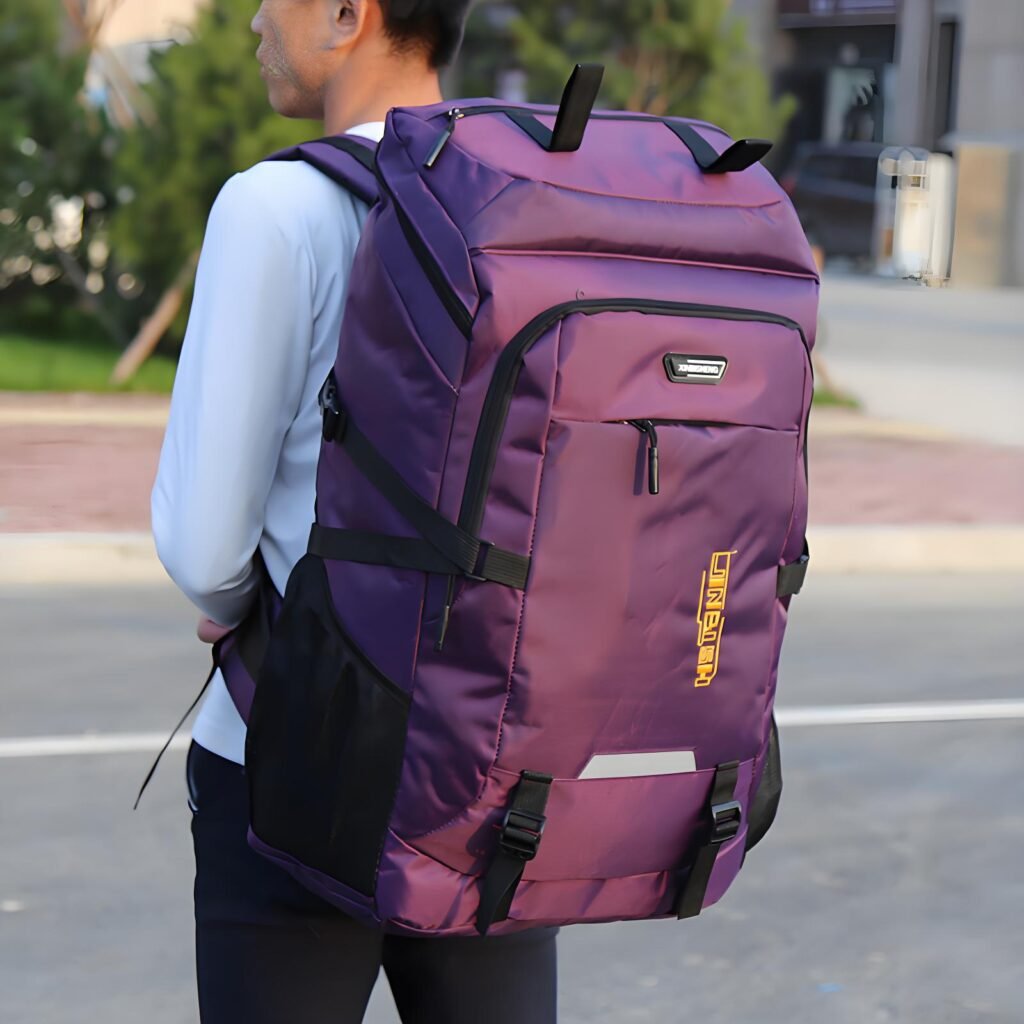Sewing PVC Patches onto Hiking Backpacks: A Step-by-Step Guide for Durability and Style
Introduction
Hiking backpacks are essential gear for outdoor enthusiasts, designed to withstand rugged terrains, unpredictable weather, and heavy loads. While functionality is paramount, personalizing these packs with PVC patches has become a popular way to add personality, identify gear in group settings, or showcase achievements like summit badges. PVC patches, known for their durability and vibrant designs, are ideal for outdoor use due to their resistance to water, UV rays, and abrasion. This comprehensive guide explores the process of sewing PVC patches onto hiking backpacks, covering materials, techniques, design considerations, and maintenance tips to ensure a professional and long-lasting result.

Chapter 1: Understanding PVC Patches
1.1 What Are PVC Patches?
PVC (Polyvinyl Chloride) patches are flexible, rubber-like emblems made from molded plastic. Unlike embroidered patches, they are three-dimensional, waterproof, and highly resistant to wear. Their bold colors and intricate designs make them stand out on fabrics like nylon, polyester, or canvas—common materials used in hiking backpacks.
1.2 Benefits of PVC Patches for Hiking Backpacks
- Durability: Withstands rain, mud, and friction from straps or rocks.
- Customization: Options for logos, text, or artwork (e.g., mountain silhouettes, national park emblems).
- Visibility: High-contrast designs help identify packs in crowded trailheads or campsites.
- Lightweight: Adds minimal weight to gear.
1.3 Common Applications
- Personalization: Names, flags, or favorite outdoor quotes.
- Functional Labels: Marking compartments (e.g., “First Aid,” “Hydration”).
- Achievement Badges: Commemorating hikes, trails, or expeditions.
Chapter 2: Materials and Tools Required
2.1 Essential Supplies
- PVC Patches: Choose patches with sew-on backing (avoid adhesive-only options for heavy-duty use).
- Hiking Backpack: Clean the surface to remove dirt or debris.
- Needles: Heavy-duty upholstery needles (size 16–18) to penetrate thick fabrics.
- Thread: Use UV-resistant polyester or nylon thread (e.g., Tex 70 or bonded nylon).
- Thimble: Protects fingers when pushing needles through tough materials.
- Fabric Scissors: For trimming thread and excess material.
- Pins or Fabric Clips: To secure patches in place before sewing.
- Seam Ripper: For correcting mistakes.
- Marking Tools: Chalk or water-soluble pen for positioning patches.
2.2 Optional Supplies
- Reinforcement Fabric: Iron-on interfacing to stabilize thin backpack materials.
- Waterproof Sealant: To coat thread knots for added weather resistance.
- Protective Patches: Place behind the PVC patch to prevent wear on the backpack’s inner lining.
Chapter 3: Preparing the Backpack and Patches
3.1 Cleaning the Backpack
Wipe down the backpack with a damp cloth and mild detergent to remove dirt or oils that could interfere with sewing. Allow it to dry completely.
3.2 Positioning the Patch
- Functional Placement:
- Top Lid: Ideal for visibility.
- Front Panel: Perfect for large designs.
- Shoulder Straps: Use small patches to avoid discomfort.
- Side Pockets: For labels (e.g., “Water Bottle” or “Snacks”).
- Aesthetic Placement: Ensure the patch doesn’t obstruct zippers, straps, or hydration tube ports.
- Symmetry: Use a ruler or measuring tape to align patches evenly.
3.3 Securing the Patch Temporarily
- Pins or Clips: Secure the patch edges without damaging the fabric.
- Fabric Glue: Apply a small amount to the patch’s back for temporary adhesion (ensure it’s compatible with the backpack material).
Chapter 4: Sewing Techniques for Durability
4.1 Threading the Needle
- Cut a 24-inch thread and thread it through the needle.
- Double the thread for strength and tie a knot at the end.
4.2 Basic Stitching Methods
- Running Stitch:
- Simple and quick.
- Pass the needle in and out of the fabric in a straight line.
- Best for lightweight backpacks or decorative patches.
- Backstitch:
- Stronger and ideal for heavy-duty use.
- Insert the needle backward through the fabric, creating overlapping stitches.
- Whipstitch:
- Wraps thread around the patch’s edge.
- Provides a clean finish and prevents fraying.
4.3 Step-by-Step Sewing Process
- Start from the Inside: Begin stitching on the backpack’s inner lining to hide the knot.
- Stitch Perimeter: Sew around the patch’s edge, spacing stitches 1/8 inch apart.
- Reinforce Corners: Add extra stitches at corners or curves to prevent lifting.
- Finish Securely: Tie multiple knots on the inside and apply waterproof sealant.
4.4 Pro Tips
- Use a thimble to push the needle through thick layers.
- Avoid pulling thread too tight, as it may warp the patch or fabric.
- For large patches, sew a second row of stitches 1/4 inch inside the perimeter.
Chapter 5: Design and Customization Ideas
5.1 Choosing the Right Design
- Minimalist: Geometric shapes or small icons for subtle personalization.
- Bold Graphics: Mountain ranges, compasses, or animal silhouettes.
- Text-Based: Inspirational quotes, coordinates of favorite trails, or owner’s name.
5.2 Combining Multiple Patches
- Thematic Arrangements: Group patches by region (e.g., patches from national parks).
- Layered Look: Place smaller patches over larger ones for depth.
5.3 Functional Customization
- Reflective Patches: Enhance visibility during night hikes.
- Glow-in-the-Dark Designs: Useful for locating packs in low light.
Chapter 6: Maintenance and Longevity
6.1 Cleaning the Patched Backpack
- Hand wash with mild soap; avoid scrubbing the patches.
- Air dry away from direct sunlight to prevent fading.
6.2 Inspecting for Damage
- Check stitches annually for wear, especially after intense trips.
- Re-sew loose areas promptly to prevent patch loss.
6.3 Storage Tips
- Store backpacks in a dry, cool place to prevent mold or material degradation.
- Avoid folding patches under heavy objects.
Chapter 7: Troubleshooting Common Issues
7.1 Patch Edges Lifting
- Cause: Insufficient stitching or thin thread.
- Fix: Re-sew with a backstitch and heavier thread.
7.2 Thread Fading
- Cause: UV exposure or low-quality thread.
- Prevention: Use UV-resistant thread and apply fabric protector spray.
7.3 Fabric Damage Around Stitches
- Cause: Needle too thick or aggressive stitching.
- Fix: Use a smaller needle and avoid over-tightening stitches.
Conclusion
Sewing PVC patches onto a hiking backpack is a rewarding DIY project that combines practicality with creativity. By selecting high-quality materials, mastering durable stitching techniques, and maintaining the patches over time, outdoor enthusiasts can transform their gear into a unique and functional masterpiece. Whether commemorating a summit, organizing gear, or simply adding flair, PVC patches offer a rugged yet stylish solution for hikers who want their backpacks to stand out on the trail. With this guide, you’re equipped to tackle the project confidently—ensuring your patches survive every adventure as resiliently as you do.


